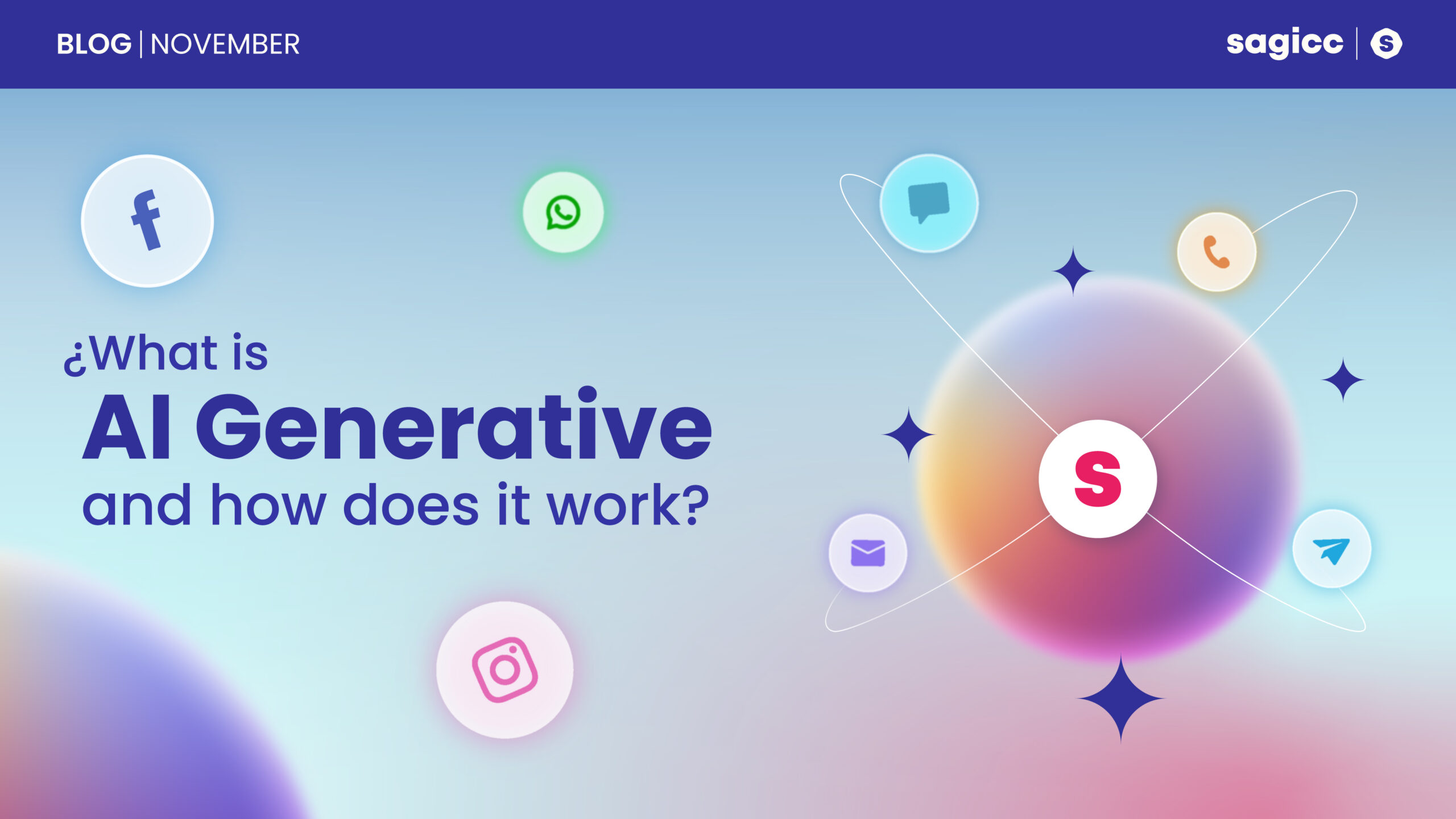Customer experience has become the key differentiating factor across various business sectors. Thus, implementing new tools to enhance and improve customer service is crucial.
Generative Artificial Intelligence has evolved from basic content creation to more sophisticated applications. In this blog, we’ll tell you everything about Generative AI and how it is transforming the world of customer experience.
What is Generative AI?
Generative Artificial Intelligence (Generative AI) refers to AI systems capable of creating new ideas and content, such as conversations, stories, images, videos, and more, based on existing data. These systems operate using learning models that enable AI to understand and generate language or images with high precision.
Over the years, Generative AI has evolved and is now used to automate tasks across various fields, significantly enhancing human productivity.
In 2014, the introduction of Generative Adversarial Networks (GANs) allowed for the creation of realistic images and videos by making two neural networks compete against each other. GANs contributed significantly to advancements in generating realistic visuals, such as human-like faces.
In 2017, Google introduced the Generative Pre-trained Transformer (GPT), which revolutionized how long text sequences are processed, enabling coherent and continuous paragraphs.
By 2020, OpenAI presented models trained with billions of parameters, advancing applications in chatbots and virtual assistants.
In 2023 and 2024, advanced text and multimodal processing capabilities were integrated, enabling the generation of both text and images while providing more natural responses.
How Does It Work?
Generative AI operates through machine learning (ML) models trained with vast amounts of data.
Foundation Models (FM) are versatile models capable of performing numerous general tasks. These models typically utilize learned patterns and relationships to predict the next element in a sequence.
Large Language Models (LLMs) are a subset of FMs that specialize in language-based tasks, such as generating text, conducting conversations, or extracting information from a source.
What sets these models apart is their ability to perform multiple tasks and generate content from minimal input.
This might interest you: «AI Vs Human Agents»
Applications of Generative AI
Generative AI has applications across various industries:
- Marketing and Sales: It enables social media content creation and analyzes consumer data to identify new business opportunities.
- Programming: Facilitates automated code development and debugging, enhancing software teams’ efficiency.
- Design and Production: Speeds up the creation of graphics, videos, or animations.
- Business Management: Automates operational tasks and generates reports with precise summaries.
These advancements come with challenges related to ethics, privacy, and sustainability. Advanced models require vast amounts of data to function efficiently. According to the Artificial Intelligence Index Report 2024, establishing strong regulations and promoting collaboration between businesses and governments is essential to manage the risks associated with this emerging technology.
Generative AI in Sagicc
Sagicc stays at the forefront by integrating Gen AI, a solution that enables businesses to optimize customer interactions through Generative AI. The configuration of Gen AI nodes within the platform facilitates personalized responses via carefully designed prompts.
These prompts include communication tone, context, and expectations, ensuring that the agent’s behavior aligns with the specific needs of each interaction. Furthermore, the new RAG (Retrieval-Augmented Generation) technology incorporated into Gen AI nodes allows access to Knowledge Base articles to provide more comprehensive and contextually relevant responses.
With these innovations, Sagicc not only automates interactions but also delivers a more personalized and efficient customer experience.
The integration of Gen AI empowers businesses to enhance productivity and strengthen customer loyalty, ensuring high-quality service across all touchpoints.
Generative AI does not create from scratch; rather, it learns patterns from prior data and reuses them to form new combinations.



